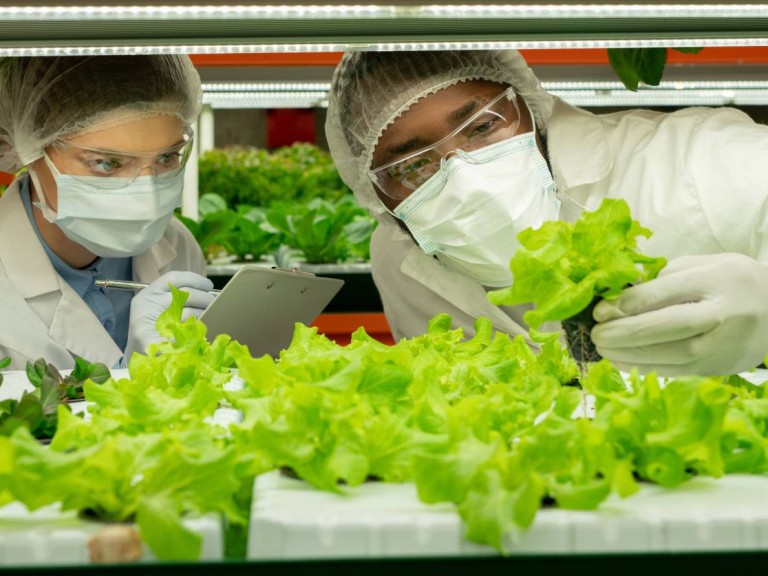- Who is the intended consumer of the food? - public, infants, immunocompromised, elderly
- How is the product distributed? - retail, food service, school lunch program
- How product is to be handled by consumer? - Heat before eating, refrigerate, wash
- How should the product be stored and transported? - Moisture level, temperature
It is critical the flow diagram is verified onsite by a competent and qualified individual for accuracy.
Foundational Aspects of Food Safety
After developing the flow diagram, it is important to start thinking about hazards to the food and how we manage those hazards.
Managing People
Employees are a source of hazards to our food. People spread illnesses such as, Norovirus and Staphylococcus, via food. Personnel that are not competent in food safety practices may enter the workplace with illnesses, sores, open wounds, etc. and increase risk to the products. Employees and supervisors should be trained in food safety including reporting of illness and injury, proper coverage of wounds, effective handwashing, use of protective equipment such as hair nets and beard nets, and personal hygiene.
Site Specific Considerations
A Food Safety Plan, although not required, may outline the risks associated with the property grounds and adjacent properties, drainage and litter. Outside of documentation it is important to maintain the roads and sidewalks, control weeds and assure outdoor areas are well organized to prevent the harborage of pests. The plant size, design, and construction shall be sufficient to control cross-contact of allergens, microorganisms, chemicals, etc. Restrooms and handwashing stations should be large enough to accommodate for the size of facility and number of employees. The plant should be constructed of materials that can be easily cleaned, sanitized and shall be in good repair.
Water
Water may be used in the food manufacturing process, cleaning and sanitation programs, and for hand washing, you will want to address the type of water used by the facility and how you assure it is free of contaminants.
Equipment and the Environment
Now let’s get more granular. Food equipment should be designed in such a way that lubricants from motor or gears cannot contaminate the food. Equipment should easily disassemble for repair, maintenance, cleaning, and sanitation. Parts, such as walls, chutes, belts, and components touching, or adjacent to, food must be food grade materials, safe and cleanable to prevent harborage and cross-contamination. The Food Safety Plan generally includes documented prerequisite programs. Pre-Requisite Programs do not address specific hazards but rather serve to maintain food plant sanitation. These activities include pest control, preventive maintenance of equipment, training, internal audits, etc. The written programs should define roles and responsibilities, procedures, corrective actions, etc.
HARPC
FDA regulation requires “You must conduct a hazard analysis to identify and evaluate, based on experience, illness data, scientific reports, and other information, known or reasonably foreseeable hazards for each type of food manufactured, processed, packed, or held at a facility to determine whether there are any hazards requiring a preventive control”. This is where the process flow you put together earlier comes into play, during this assessment you must consider biological, chemical, and physical hazards with each ingredient and step of the process in your flow diagram. Some hazards for consideration include parasites, pesticide residues, decomposition, natural toxins, food or color additives, undeclared allergens. As known or reasonably foreseeable hazards are identified you want to indicate if a preventive control is required and if so, what type of preventive control is needed. Preventive Controls Include:
- Process Preventive Controls
- Allergen Preventive Controls
- Supply-Chain Preventive Controls
- Sanitation Preventive Controls
A process control is a set of procedures and processes used to address the hazard and are incorporated into the process. Examples include heating, refrigerating, irradiating, or acidifying (as in canning). The process and procedures must define minimum and maximum values such as minimum temperature of 167 degrees for a minimum of 10 minutes, to kill a potential hazard of salmonella (biological hazard with eggs) when baking cookies. Keep in mind quality parameters will differ, a cookie will need to be cooked at 350 for 10-11mins, therefore the cookie making and quality process are greater than the time and temp needed to kill potential salmonella in the ingredient eggs, even though the time and temp is exceeded, documentation and verification of time and temp is required. Food Allergen Preventive Controls are generally applied at receiving, handling, and storing steps to control cross-contact. Processes, procedures, and good employee practices should be in place. Each year mislabeled product containing allergens are recalled, you will want to make sure your process has checks and balances in place to properly identify ingredients and labels. Sanitation integrated into a food safety program is generally a pre-requisite program. Sanitation preventive controls build upon this by requiring monitoring, corrective action, and verification procedures for when a sanitation control is out of specification. Sanitation preventive controls differ from a sanitation pre-requisite program. Sanitation pre-requisite programs may be thought of as a program in place to maintain the sanitary condition of the environment and equipment. Sanitation preventive controls are in place to specifically address a hazard such as allergen cross-contact between product runs. And lastly, supply-chain controls are used to ensure the products you receive in order to make sure your food is safe for use, an example is aflatoxin level lab test results for raw peanuts or certification the final packaging is rated “food safe”. Please note: Specific details regarding the preventive control must be documented along with your verification activities. Your source of scientific and technical validation for the control must be on file. Together, these controls contribute to food safety.





